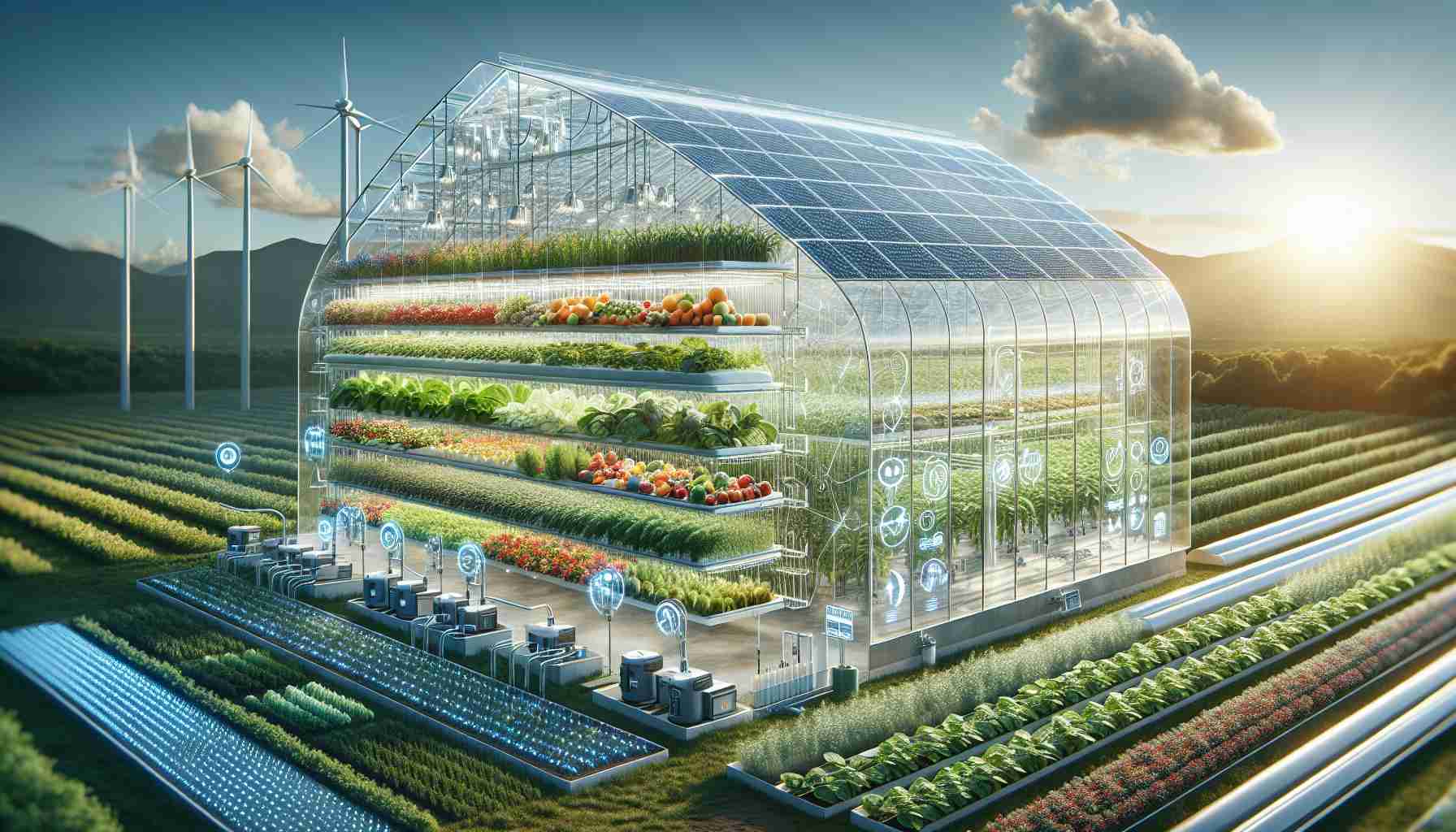
Innovative Approaches to Sustainable Farming
A groundbreaking greenhouse system has emerged from a research initiative at Turkey’s Final International University, incorporating a revolutionary energy framework. This innovative setup combines a semi-transparent photovoltaic (STPV) array, advanced battery energy storage, and hydrogen production to create a self-sustaining agricultural environment.
The design of this greenhouse is meticulously optimized to achieve both maximum net present value (NPV) and reduced reliance on the grid. The STPV panels, allowing sunlight to penetrate for plant growth while generating electricity, address the critical challenge of energy scarcity during winter months. To mitigate this seasonal limitation, the system integrates a battery energy storage system (BESS) paired with hydrogen—a hybrid solution aimed at achieving year-round energy stability.
The technological specifications include 7% efficiency for STPV panels, while the BESS boasts an 80-90% charging efficiency. A detailed cost analysis reveals that the hydrogen production and storage components are also economically strategic, ensuring sustainability while minimizing operational costs.
Employing a sophisticated algorithm called GBO, researchers evaluated several operational scenarios, tailoring the system for different energy independence levels. The results show promising metrics, with varying sizes and capacities tailored for financial optimization, energy autonomy, and overall effectiveness in resource management.
This pioneering work promises to redefine agricultural practices and enhance energy efficiency within the farming sector, marking a significant step towards sustainable and empowered food production.
Revolutionizing Agriculture: The Future of Greenhouses with Energy Independence
Innovative Approaches to Sustainable Farming
A new era in sustainable farming is on the horizon, highlighted by a novel greenhouse system developed at Turkey’s Final International University. This system utilizes an advanced energy framework that integrates cutting-edge technology with traditional agricultural practices to create an independent and sustainable farming environment.
Features of the Greenhouse System
1. Semi-Transparent Photovoltaic (STPV) Panels:
– The greenhouse employs semi-transparent photovoltaic panels which serve a dual purpose. They allow sufficient sunlight to penetrate for plant growth while simultaneously generating renewable electricity. With an efficiency rating of 7%, these panels are designed to optimize energy capture throughout the day.
2. Battery Energy Storage System (BESS):
– A crucial component of this system is the battery energy storage, boasting 80-90% charging efficiency. This ensures that excess energy generated during the day can be stored for nighttime use or during peak demand periods, significantly reducing reliance on the electrical grid.
3. Hydrogen Production Integration:
– To further bolster energy independence, the greenhouse incorporates hydrogen production capabilities. This hybrid approach provides additional energy reserves, particularly beneficial during winter months when sunlight is scarce.
Economic and Operational Insights
The innovative design is not only focused on energy efficiency but also on economic viability. A comprehensive cost analysis conducted during the research indicates that the hydrogen production and storage systems are cost-effective, ensuring long-term sustainability while maintaining low operational costs.
Using a sophisticated algorithm known as GBO (Genetic Bees Optimization), researchers have tested various operational scenarios to tailor the greenhouse for different levels of energy independence. This strategic planning enables the optimization of different sizes and capacities, thus maximizing Net Present Value (NPV) and enhancing the overall effectiveness of resource management.
Pros and Cons of the New Greenhouse Technology
Pros:
– Increased Energy Independence: Reduces reliance on external energy sources, enabling farms to operate more sustainably.
– Reduced Carbon Footprint: By utilizing renewables and minimizing fossil fuel use, the greenhouse contributes to lower emissions.
– Economic Benefits: Strategic cost management in hydrogen production and energy storage enhances profitability.
Cons:
– Initial Costs: The upfront investment for advanced technology can be a barrier for small-scale farmers.
– Technical Challenges: Integration of complex systems may require specialized knowledge and maintenance.
Use Cases and Market Trends
This greenhouse model could transform various agricultural sectors by providing a flexible solution for varied climates and conditions. Its adaptability can be particularly advantageous in regions facing energy scarcity or extreme weather. As the world moves towards more sustainable practices, the demand for similar innovative agricultural technologies is expected to rise.
Looking Ahead: Predictions and Innovations
As technological innovations continue to emerge in the field of sustainable farming, we can expect significant strides in energy-efficient practices and food production methods. Similar greenhouse designs could become standard in agricultural practices globally, driven by a commitment to sustainability and energy independence.
For more information on sustainable farming practices and innovations in agricultural technology, visit Final International University.



